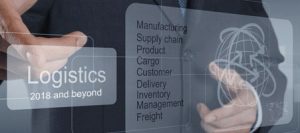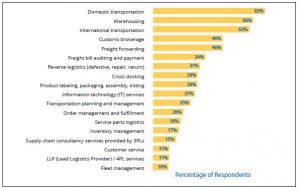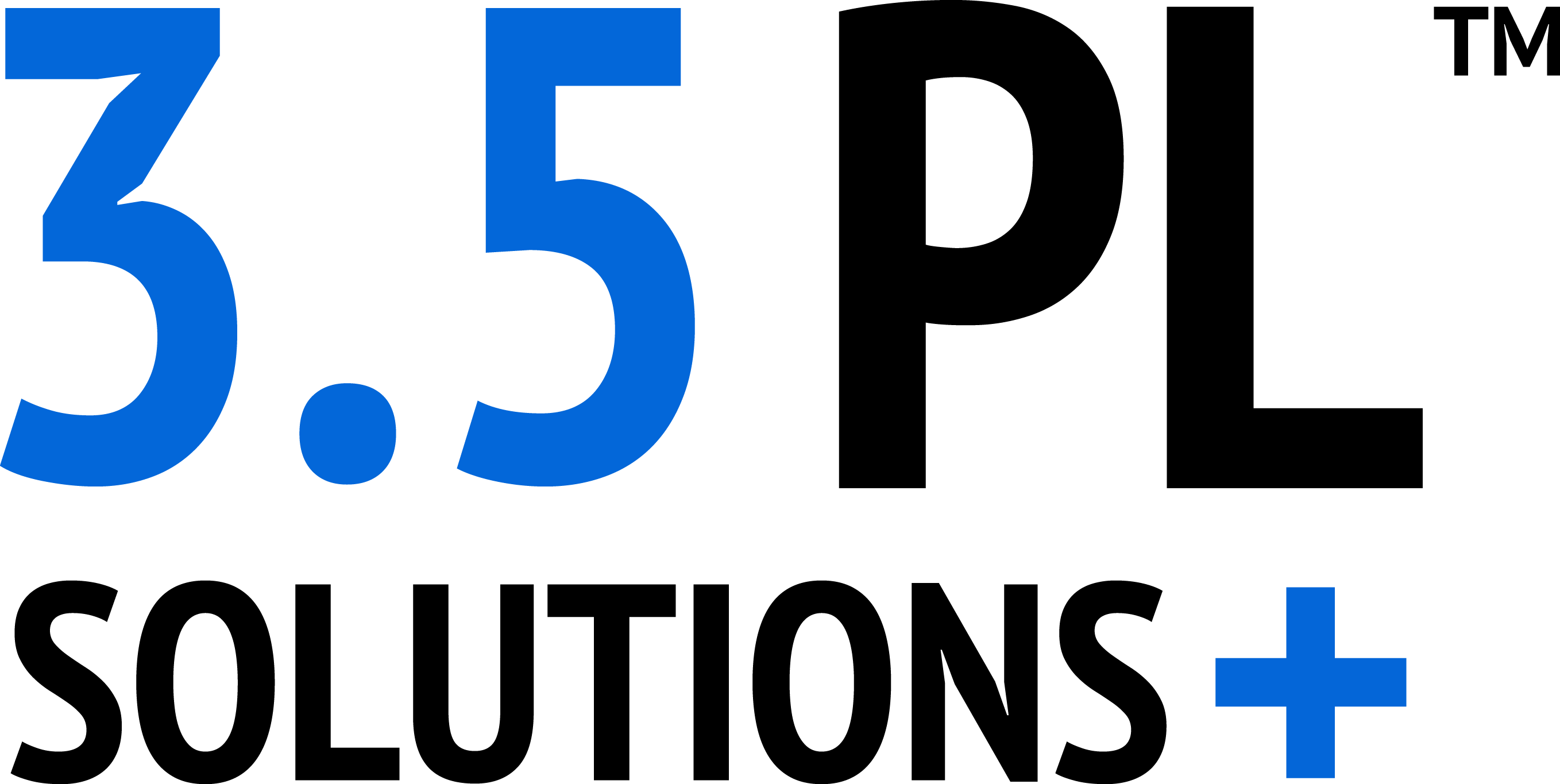
by logisticsplus | Jan 11, 2018 | News
 There’s a lot going on in the world of logistics right now. At Logistics Plus, we’ve been keeping pace with many of the current transportation and logistics trends, and here are some things to watch in both trucking and global logistics over the next several years.
There’s a lot going on in the world of logistics right now. At Logistics Plus, we’ve been keeping pace with many of the current transportation and logistics trends, and here are some things to watch in both trucking and global logistics over the next several years.
- Automation. Labor shortages and capacity constraints are driving deep investments in technology and automation, such as load matching, robotics, artificial intelligence, machine learning, APIs, and self-driving vehicles. Many 3PLs are dedicating resources to R&D and innovations, and employees are being empowered to quickly anticipate and address customer demands.
- Ecommerce. Global e-commerce logistics costs are expected to have a 17% CAGR through 2020. A CAGR of that multiple hasn’t been seen in the 3PL market for some time. Traditional bricks-and-mortar store-based distribution models are being replaced with less forgiving e-commerce-based fulfillment models that provide less buffer inventory, require faster transit times, and that demand more precise pick-up and delivery times (including same-day deliveries).
- Amazon. The 900-pound gorilla of the freight world continues to build out its own transportation and logistics network, challenging 3PLs to think outside the box. 3PLs must consider how to both compete and partner with Amazon to deliver the e-commerce and omnichannel logistics solutions retailers will require.
- Taxes and Legislation. The U.S. tax bill will be a huge shot in the arm for the economy. This could lead to much-needed pay increases and capital expenditures as transportation companies work to improve their fleets and increase their capacities. Additionally, the passing of proposed infrastructure funding by Congress could address critical deficiencies in the U.S. transportation network.
- Global Growth. Regional growth in China, Mexico, and India will continue to drive a need for effective logistics solutions in those countries. Tightening regulations in China are resulting in some manufacturing and supply chain shifts to other Asian countries. The fast delivery requirements of e-commerce are leading to near-sourcing trends as manufacturers and distributors try to locate inventory closer to consumers.
- Freight Forwarding. The international freight forwarding industry is riding tailwinds into 2018. Faster speed expectations are driving shifts from ocean to air shipments. Meanwhile, ocean carriers are adding newer and larger ships which could result in excess ocean capacity and lower rates.
- Consolidation. M&A activity within the logistics industry will continue in this seller-friendly market as 3PLs look for both growth and technology opportunities. Larger mergers are expected in the high-velocity fulfillment e-commerce area, while strategic partnerships – particularly outside the U.S.—are being created to address niche markets within core verticals and concentrated geographies.
What trends will you be watching in 2018 and beyond? What’s your most pressing logistics or supply chain challenges for the coming year? Some informational links are provided below if you are interested in further reading on trends within the transportation and logistics industry.
Key Takeaways from the 3PL Value Creation Chicago Summit 2017 (Armstrong & Associates)
Ten Trends Trucking Should Watch in 2018 (Fleet Owner)
3 Tech Trends Shaping the Future of Global Logistics (Supply Chain 247)
2018 Third-Party Logistics Study – Key Takeaways (3PL Study)


by logisticsplus | Nov 15, 2017 | News
In case you haven’t had a chance to read the 2018 Third-Party Logistics Study, here are some key takeaways from the results and findings of the 22nd annual report by Dr. C. John Langley and Infosys:
- Global Results Have Been Mixed. Overall 3PL revenues, estimated at $802B in 2016, have declined slightly over the past several years despite increases in the Asia-Pacific and North America.
- Logistics Costs Are Increasing. Logistics expenditures as a percentage of sales revenues increased to 11% in the current year, up from 10% the previous year, as a higher percentage of shippers’ transportation spend is being outsourced with 3PLs (reportedly 55% in most current year).
 Shippers Are Outsourcing More. 61% of shippers in the study noted that they intend to increase their usage of outsourced logistics services. Domestic transportation and warehousing remain the two most outsourced logistics services; however, outsourcing of information technology (IT) services had the greatest year-over-year increase for the second consecutive year (see graph).
Shippers Are Outsourcing More. 61% of shippers in the study noted that they intend to increase their usage of outsourced logistics services. Domestic transportation and warehousing remain the two most outsourced logistics services; however, outsourcing of information technology (IT) services had the greatest year-over-year increase for the second consecutive year (see graph).- The IT Satisfaction Gap Is Widening. Despite more outsourcing of IT activities, fewer shippers are satisfied with these services; an indication that, perhaps, shippers’ expectations have increased as technology has improved or because shippers are seeking enhanced analytical capabilities to help drive more effective supply chain decisions.
- 3PL Capabilities Are Expanding. As more conversations around supply chain efficiency have entered the board room, 3PL providers are refining and expanding their core competencies, which in turn is allowing shippers to focus more on their core competencies.
If you haven’t already, you should download and read the entire 2018 Third-Party Logistics Study. The authors also share some perspectives on the impact blockchains could have on logistics; automation and digitization in the supply chain; and the logistics talent revolution.
If you’re a shipper looking to outsource some or all of your transportation, logistics, or supply chain activities, let us know. We stand ready to help businesses address their most critical logistics challenges.


by logisticsplus | Oct 10, 2017 | Uncategorized
Like most logistics companies right now, Logistics Plus (LP) is not immune to the challenges and tribulations of getting shipments delivered to the hurricane impacted island of Puerto Rico. However, true to LP form, our team continues to work tirelessly to “make it happen” when our customers come calling. One such customer, Amphenol – one of the largest manufacturers of interconnect products in the world – came to us immediately after Hurricane Maria tore through the Caribbean to see if we could help deliver a satellite phone from St. Marys, PA to its Añasco, Puerto Rico manufacturing facility. The facility had virtually no power and had lost all communications, and the satellite phone would be its lifeline to the outside world. Since LP already provides dedicated transportation and compliance services to Amphenol, it was only natural they should turn to us for this critical shipment.
Rosy Trevino, the LP logistics and compliance specialist dedicated to Amphenol, immediately recruited Libby O’Hara from the LP North American transportation team. Together, working day and night (and through the weekend) they found a personal courier who would then hand-carry and deliver the satellite phone to Añasco, Puerto Rico. Since no cargo planes were flying to or from Puerto Rico, the courier was booked on a passenger flight – one of only a few allowed to land in Puerto Rico. Upon landing, the courier had to rent a car and then drive three hours west of the airport – through hurricane ravaged areas – to finally deliver the shipment. In the end, the satellite phone was delivered in just two days after the hurricane hit, allowing the local Amphenol facility to resume communications with customers and suppliers.
In the subsequent days that followed, Rosy and Libby arranged for additional deliveries of critical manufacturing components, including two packages of parts from California and 30 packages from Michigan – both shipments hand-delivered to Puerto Rico via personal courier services arranged by the LP team! Additionally, we continue to work relentlessly to get more shipments to the Amphenol facility in Añasco, Puerto Rico, including an ocean container from China that was initially re-routed to Jamaica but will finally deliver today.
A big thank you to Rosy and Libby and the rest of the LP team that has worked behind the scenes to support this important customer and their critical shipments going into Puerto Rico. Your passion for excellence has not gone unnoticed!

by logisticsplus | Sep 7, 2017 | News
 At Logistics Plus, we provide both 3PL and 4PL solutions. What’s the difference between a 3PL and a 4PL? In a nutshell, a 3PL is a partner that provides logistics services to a client using either their own assets, contracted assets, or both. Conversely, a 4PL is an integrated and outsourced partner, often with dedicated, onsite resources, that manages other logistics providers on a client’s behalf. In many of these situations, the 4PL provider becomes the de facto logistics department for the client. However, for many of our clients, the ideal Logistics Plus® solution lies somewhere in-between – or as we refer to it … 3½PL™ solutions.
At Logistics Plus, we provide both 3PL and 4PL solutions. What’s the difference between a 3PL and a 4PL? In a nutshell, a 3PL is a partner that provides logistics services to a client using either their own assets, contracted assets, or both. Conversely, a 4PL is an integrated and outsourced partner, often with dedicated, onsite resources, that manages other logistics providers on a client’s behalf. In many of these situations, the 4PL provider becomes the de facto logistics department for the client. However, for many of our clients, the ideal Logistics Plus® solution lies somewhere in-between – or as we refer to it … 3½PL™ solutions.
With our 3½PL approach to 4PL solutions, we become a valuable extension to your existing supply chain management team. We provide you with onsite or offsite dedicated logistics resources and preferred access to both our own and contracted assets. That includes access to our National Truckload (NTL) capabilities, LTL and truckload solutions, warehousing and distribution options, import/export services, project cargo expertise, global trade compliance oversight, and technology platforms. An additional aspect of our 3½PL solutions is that they can be highly customized or even à la carte. Only need warehousing and fulfillment? No problem. Just need customs brokerage and freight forwarding? We can do that too. Need customized technology integrated with your shopping cart? We’ve got you covered.
In a 3½PL arrangement, even though our own assets and resources are available to you, we are not married to them if other logistics partners can provide better or more affordable solutions. That’s the beauty of this approach. As part of your team (and not a replacement for it), we can look up and down your supply chain, identify the greatest opportunities for improvements, and then act on them. So, not only do you get access to a nationally recognized great supply chain partner and a top freight brokerage firm, you do so without having to increase (or decrease, if that is a concern) your own staff. Additional benefits include:
- Design and planning consultation
- Domestic and international transportation management expertise
- Oversight for customs regulations and compliance
- Smart and efficient technologies, such as eShipPlus™ and eWorldPlus™ powered by CargoWise One®
- Business intelligence, data visualizations, and dashboards using our customized MyLogisticsPlus™ platform
- A liaison between carriers and shipping sites
- Audited and consolidated invoicing
The presentation shown below provides a general overview of our 4PL solutions. Although we still often refer to them as 4PL solutions, which is a more common industry term, you should know that our trademark 3½PL approach is a key point of differentiation that has led to many successful programs for clients such as GE Transportation, GE Oil & Gas, WeWork, Canadian Solar, HeroBX, and others. If you’d like to engage Logistics Plus to help you with your own logistics challenges, simply click the button below to get started.


by logisticsplus | Apr 25, 2017 | News
 Global Supply Chain Control Towers are gaining interest among organizations that need greater visibility and control within their increasingly sophisticated supply chains. In a recent Capgemini Consulting report, a supply chain control tower is defined as a central hub with the required technology, organization and processes to capture and use supply chain data to provide enhanced visibility for short- and long-term decision making that is aligned with strategic objectives.
Global Supply Chain Control Towers are gaining interest among organizations that need greater visibility and control within their increasingly sophisticated supply chains. In a recent Capgemini Consulting report, a supply chain control tower is defined as a central hub with the required technology, organization and processes to capture and use supply chain data to provide enhanced visibility for short- and long-term decision making that is aligned with strategic objectives.
Supply chain towers are often an important component to 4PL supply chain solutions as companies realize that mastery of their supply chain must become a core competency to remain competitive. Although visibility within the supply chain is often a significant driver, the supply chain control tower must go beyond visibility to provide integrated transportation and logistics solutions and global trade compliance services. These services must be configured to support the needs of business units and the key fulfillment attributes of a product-line.
The value of having one global supply chain system and standardized processes gives companies the flexibility to plug in new transportation and logistics providers as needs change, or quickly assimilate new businesses. The control tower reduces the risk of getting locked into using an external provider’s system, and changes the balance of power. Control tower managers have the visibility and data-driven analysis of service levels to objectively manage each provider. Similarly, new businesses and product-lines can be plugged in with standard interfaces and highly configurable processes.
Logistics Plus has significant experience creating and managing global supply chain towers for a number of clients. We take a very customized, yet dedicated approach to configuring and integrating the control tower into each client’s supply chain. The two illustrations shown below are examples of control towers we have implemented for two very different companies (click to enlarge). One is a global energy company, and the other is a leading co-working space provider. As shown in the examples, the first company’s supply chain required multiple regional control towers to ensure visibility and control of logistics across multiple regions. In contrast, the second company required one primary, centrally-located control tower to oversee everything from procurement to warehousing to final deliveries.


If you’re looking for greater visibility and control within your supply chain, with an experienced 4PL partner that uses a very customized and dedicated approach, please contact us. We’d love to review your business challenge and discuss whether a global supply chain tower might be a good fit for your company.


 There’s a lot going on in the world of logistics right now. At Logistics Plus, we’ve been keeping pace with many of the current transportation and logistics trends, and here are some things to watch in both trucking and global logistics over the next several years.
There’s a lot going on in the world of logistics right now. At Logistics Plus, we’ve been keeping pace with many of the current transportation and logistics trends, and here are some things to watch in both trucking and global logistics over the next several years.





 At Logistics Plus, we provide both 3PL and 4PL solutions. What’s
At Logistics Plus, we provide both 3PL and 4PL solutions. What’s 


